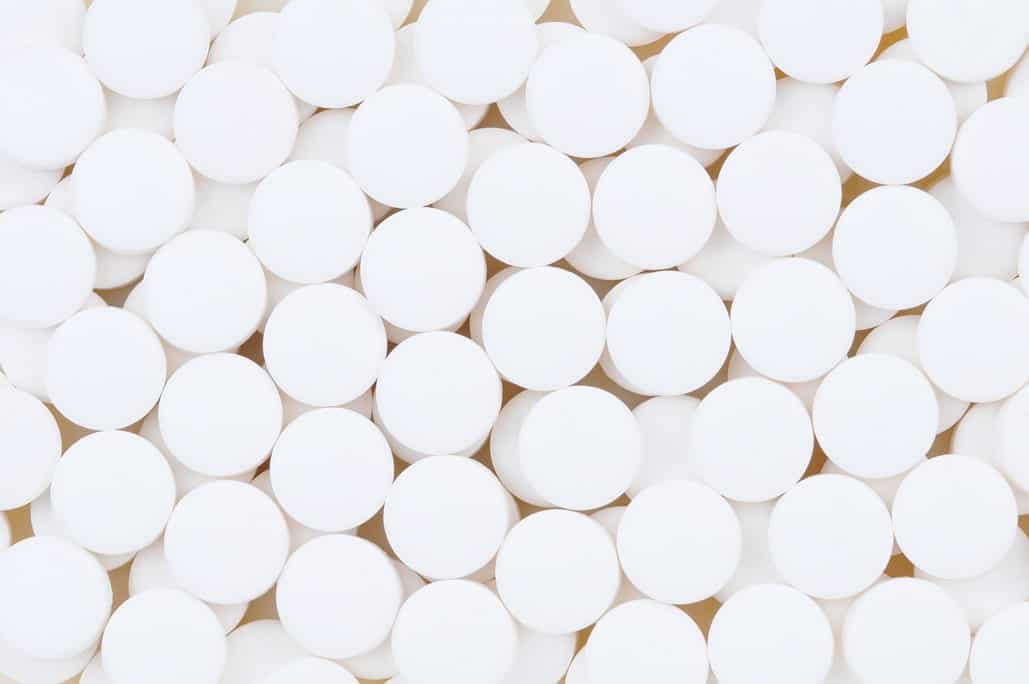Austin Eubanks, one of the survivors from the 1999 Columbine High School shooting, was found dead in his house on May 18, 2019. He had passed away from an overdose, and no foul play was suspected. Eubanks had been sober for many years prior but had relapsed. He was found dead after a welfare check, as he was not answering his phone. Eubanks lost the battle with the very disease that he was fighting so hard to help others face. His legacy was to build a community of support for those who were struggling with addiction, so they could achieve long-term sobriety. He was a motivational speaker and also hosted numerous workshops that were designed to help those struggling with addiction get sober. He first developed an addiction after being prescribed prescription opioids for the gunshot wounds he sustained from the shooting. This addiction spiraled out of control and took over his life. While the shooting happened while Eubanks was just 17, the addiction has followed him through the majority of his adult life.
Austin Eubanks and the Columbine High School Shooting
https://www.youtube.com/embed/lcHN0NBzuXE On April 21, 1999, Americans across the nation were transfixed with horror by the Columbine High School shooting from the day before that left 16 people dead. This was the deadliest U.S. rampage at the time and was led by two fellow high school students. The rampage shocked the nation, as they watched hundreds of terrified and grieving students escape from high school. The two shooters had strategically planned the shooting. They marched into the library with guns and pipe bombs shooting everyone in sight. 13 students and 1 teacher lost their lives before the two shooters turned the guns on themselves and committed suicide. “One of [the shooters] looked under a desk in the library and said “Peek-a-boo,” then fired, Cohn said. Anyone who cried or moaned was shot again. One girl begged for her life, but a gunshot ended her cries.” Austin Eubanks was one of the lucky survivors. He was, however, shot twice in the hand and knee, as he hid under a table in the library. He also witnessed his best friend, Corey DePooter, getting shot. DePooter died instantly. After that incident, Eubanks was prescribed some strong opioids by doctors. The opioids were meant to relieve pain from the gunshot wounds. However, Eubanks readily admitted that the drugs also helped him deal with the emotional pain of seeing his friend die. Soon, the drugs took over his life and he was addicted. The addiction spiraled further out of control and followed Eubanks for the vast majority of his adult life. He was eventually able to find long-term recovery after several tries at residential treatment.
Memories from the Past Come Flooding Back
Trauma victims will often struggle their entire lives. Different reminders of the past can trigger relapses and distress. This had been a particularly difficult year for Eubanks. As it was the 20th anniversary of the Columbine High School shooting, anniversary coverage of the event had flooded Colorado’s airways and newspapers. They were a constant reminder of the trauma that he had suffered in the past. On top of all that, Eubanks was repeatedly being interviewed by local and national outlets for his experience. It was like he had to relive the moment constantly. The cherry on the cake was the Highlands Ranch STEM School shooting that happened on May 7th. Two students walked into the school and opened fire. All of these events could have been too much for Eubanks to handle. This event was not only difficult for Eubank. It was also a heavy stone for many Columbine survivors. The STEM shooting ripped open a healing wound at a time where many were focusing their emotional energy to get through the 20th anniversary of the Columbine High School shooting.
“We developed this false sense of security that the tide had turned and then STEM happened, and it happened so close… You drop a rock in a pond and it all just ripples out.”
Many Columbine survivors have spoken out about the incident. Cartaya, another Columbine High School shooting survivor, spoke out about his experiences. He struggled with suicidal thoughts for years after the Columbine High School shooting, but is now the co-founder of The Rebels Project. The is a non-profit organization that connects trauma survivors with professional counseling and with one another. 
The Relationship Between Trauma and Addiction
Trauma and addiction often come hand in hand. Many addicts require dual diagnosis treatment, as they have co-occurring mental health disorders. Stress, anxiety, and trauma are often co-occurring mental health disorders that can lead to substance use disorders (SUDs). A study in 2010 found that 70% of adolescents who struggled with substance abuse were also exposed to some type of trauma. Teens who experienced physical or sexual abuse or assault were three times more likely to abuse drugs or alcohol than those who had no history of trauma. Drugs and alcohol are often used as a coping mechanism to deal with negative thoughts and emotions. Those who feel stressed or depressed may do drugs or drink in order to get the stimulation that they need. When they are under the influence, they may be able to temporarily forget about their problems or experience some form of euphoria. These individuals may continue to abuse drugs in order to feel alive. Over a period of time, the abuse will turn into an addiction. This is what happened with Austin Eubanks. The trauma from the Columbine High School shooting caused him to abuse opioids in order to forget about the pain. The abuse eventually led to dependence and tolerance. After some time, Eubanks realized that he was addicted to the opioids that he was prescribed with and that he had difficulties trying to get sober. This progression of events is not unusual for many other trauma victims. 
The Problem with Prescribing Opioids to Treat Pain
“As a result of my injuries, I was pretty significantly medicated about 45 minutes after being shot. I remember immediately being drawn to that feeling because it took the emotion away.”
The problem with prescribing opioids to treat pain is that many people who are prescribed opioids end up abusing or getting addicted to their medications. Approximately 21% to 29% of patients who are prescribed opioids for chronic pain will end up misusing them. Another 8% to 12% of these individuals will develop an opioid use disorder (OUD). Eubanks did not actively seek drugs. He was one of the unfortunate people that got addicted to opioids. The only reason that he became addicted to opioids was that he was prescribed them, as he was shot twice during the shooting. The unfortunate truth about opioids is that most of these drugs are highly addictive and come with a high potential for abuse. Those who take these drugs will end up abusing them once they have developed a tolerance. It’s also important to note that many people got hooked on opioids and opiates because they were unaware of just how addictive these drugs are. Many patients who are prescribed opioids are also not equipped with the tools needed to avoid addiction. They do not get treated for any mental health disorders or illnesses that they may be struggling with. The fact that these individuals do not get any help for their mental health disorders will prevent them from getting sober. Even if these individuals try to quit drugs or drinking, their bodies may not produce enough “feel good” chemicals. This imbalance may cause them to relapse.
Alternatives to Opioids
As opioid addiction and overdose rates continue to rise, many doctors are recommending using other alternatives to treat pain. Prescription opioids are only being prescribed when absolutely necessary. Some other alternatives that can be used to treat chronic pain in lieu of opioids include:
- Over-the-counter prescriptions, like ibuprofen or acetaminophen
- Physical therapy, like physical medicine and rehabilitation and exercise programs
- Acupuncture, which can interrupt pain signals
- Surgery to correct any abnormalities in the body that may be responsible for the pain
- Injections or nerve blocks that may short-circuit pain
- Massage, biofeedback and other relaxation techniques to control involuntary functions like one’s heart rate
- Radio waves or radiofrequency ablation, which can offer pain relief for up to two years
- Spinal cord stimulation, which uses a device similar to a pacemaker to replace pain with a more tolerable sensation
The American Society of Anesthesiologists also recommends several other alternatives that can help. In many cases, a combination of different techniques will need to be used to effectively treat chronic pain without the use of opioids.
Eubank’s Message About Drugs and Pain
Eubanks had constantly spoken out about the dangers of opioids, as well as another driving force behind America’s opioid crisis: Millions of Americans are struggling and suffering from crippling emotional pain that they do not know how to fix. Many people have experienced the trauma of some kind, but don’t know what they can do to fix their mental and emotional health afterward. They are not aware of the importance of their mental wellbeing.
“We live in a culture today that is ill-equipped to address emotional pain in a healthy fashion.”
Trauma comes in all shapes and sizes. It can come from a shooting, a divorce and more. Many people will retreat from their social circles. Other people may turn to drugs and alcohol to get them through the emotional pain that they’re experiencing. Many people do not have the skills to deal with emotional pain in a healthy way. One of the messages that Eubanks wanted to send is that we, as a community, need to raise awareness for mental health. We must be able to equip ourselves and others with an effective way of dealing with emotional pain and other mental health issues.
Way to Deal with Emotional Pain and Trauma
Emotional pain is more than just a feeling of sadness. It can cripple you to your core. It can make you feel like you’re unable to experience the pleasure of any kind. This is also known as anhedonia. Learning how to process traumatic events and work through emotional pain is difficult. It takes time and it takes work. Following the shooting, Columbine High School students were offered counseling services if they needed it. It was not mandatory, and many students actually decided not to seek any professional help. Looking back, many students now claim that they would have benefited tremendously if they did go to counseling. The body holds onto stress and anxiety in different ways. It often stores it deep in our subconscious where it will resurface at another time. Many people hide from their pain and pretend that they’re dealing with it without even acknowledging or honoring it. There are many different ways to deal with emotional pain and trauma, and a mental health therapist can help clients process their emotions and learn how to move on. They may use behavioral therapies to help change negative thoughts and emotions into positive ones. Therapists can also help clients work through what they’re feeling, and pick up skills that can help them cope with any anxiety or negative emotions that arise in the future.
How to Treat Trauma and Addiction Concurrently
As trauma can serve as a catalyst for drug and alcohol abuse and addiction, it needs to be treated at the same time. There are many evidence-based treatment approaches that can treat both of the disorders at the same time. Some of the approaches that are used include:
- Behavioral therapies like Eye Movement Desensitization and Reprocessing (EMDR), which can help patients learn how to reprocess traumatic events
- Medications that help treat not only the addiction but also any physiological symptoms that may come with trauma
- Specific one-on-one or group therapy that addresses the trauma and helps patients process their emotions
Each drug and alcohol rehab facility will specialize in a different technique or will offer a different combination of strategies. Those who are dealing with trauma must make sure that the addiction experts and psychotherapists at the rehab facility are experienced in treating trauma, as well as addiction. Both of these treatments are needed to help addicts achieve sobriety. The addiction treatment center must also be able to address specific concerns and issues that affect trauma victims. Often times, many drug rehab facilities will have special programs for trauma victims. This creates a unique environment where trauma victims are able to connect with and bounce ideas off one another. These individuals may feel that they are able to better relate to one another and find a shoulder to lean on during difficult times. 
Austin Eubank’s Work in Addiction and Sobriety
Once Eubanks achieved long-term recovery, he started trying to help other people who were in similar situations. He became an expert in the addiction treatment industry and was an internationally-recognized speaker and consultant on topics surrounding behavioral health, addiction recovery and prevention, and drug policy. He spent a large amount of time trying to change policies and legislation, as well as help those who were still struggling with drug or alcohol abuse. He openly shared his story, as well as his experiences with trauma and abuse. For example, he provided expert commentary for the following publications and news outlets:
- CBS This Morning
- Face the Nation
- Rolling Stone
- Vice News
- NBC Nightly News
- Fox News
- MSNBC
- CNN
Before he passed away, he spoke at the 2019 Connecticut Opioid and Prescription Drug Prevention Conference on May 2. His goal was to raise awareness for opioid-related initiatives that were occurring in Connecticut. Eubanks has also served as the Chief Operations Officer for Foundry Treatment Center. He directed a nationally-accredited treatment program that has helped thousands of Americans achieve long-term sobriety. He also held non-profit board positions at various foundations and treatment centers and took on leadership roles for many other organizations. His death is a huge loss for the addiction treatment industry. 
The Opioid Crisis in Colorado
“More than 7.4% of Medicare prescriptions in Colorado are for prescription opioids prescription, such as codeine and oxycodone,. That is 1.7 percentage points higher than the national rate.”
Colorado faces one of the largest opioid crisis in the nation. This state prescribes more prescription opioids than the national rate, which means that many Coloradans are being exposed to a highly addictive drug. Many of these individuals will end up abusing, misusing and getting addicted to the very opioids that they were prescribed. It’s clear that we need to do more to prevent this public health issue from worsening. Let’s take a look at some statistics pertaining to the opioid crisis in Colorado:
- 578 overdose deaths involving opioids were reported in 2017
- A 5-fold increase of heroin-involved deaths was seen from 2010 to 2017
- Prescription opioid-involved deaths doubled from 176 to 300 cases from 2010 to 2017
- Colorado providers wrote 52.9 opioid prescriptions for every 100 persons in the state in 2017
- Neonatal Abstinence Syndrome (NAS) increased five-folds from 2004 to 2014
From these statistics, it’s clear that many Coloradans need help. They are struggling, and not enough is being done. Many people don’t realize that they are addicted until it’s too late. Those who are addicted have a very difficult time trying to get sober. It may be difficult for them to find opioid addiction treatment programs or the addiction medications that they need to recover. In recent years, the opioid crisis has only been worsening in Colorado. This is the case for most states nationwide.
Opioid Addiction Treatment
Those who are struggling with opioid addiction can achieve sobriety with the right type of drug detox and rehab program. Everyone needs something different, which is why it’s important to find an alcohol and drug treatment center that can customize each patient’s treatment plan. All opioid addiction treatment plans should include a medical detox process. This is absolutely necessary for easing withdrawal symptoms and ensuring that patients recover in a safe and comfortable manner. Those who do not receive drug detox will often have difficulties getting sober. Medical detox comes in various types. Some medications are weaker opioids, like methadone or Suboxone . This is also known as Opiate Replacement Therapy (ORT). It works because a strong opioid is being replaced for a weaker one that will continue to stimulate the receptors, but not as aggressively or intensely. Other non-opioid addiction medications, like lofexidine, can also be as effective. After detox, patients will also receive a whole litany of other evidence-based treatment approaches, like behavioral therapies, one-on-one counseling, drug education classes and more. These approaches help addicts learn how to rebuild their lives and manage addictive behaviors so that they do not relapse or fall back into their old ways.
Get Sober with Help from Northpoint Recovery
When faced with a traumatic situation or event, many people end up turning to drugs or alcohol. This is a fact. Many people who are prescribed opioids will end up getting addicted to them. Over 80% of heroin users started off abusing prescription opioids. Their addiction simply spiraled even further out of control after they were cut off from their supply. Here, at Northpoint Recovery, we understand that trauma and addiction often come hand in hand. Due to this reason, we offer specialized addiction treatment programs that are geared towards dealing with trauma. Those who have experienced a traumatic experience, like Austin Eubanks, need more support than those who have no history of trauma. We are ready to offer that support. If you or a loved one are struggling to cope with a traumatic experience and to recover from a substance use disorder, consider getting professional help at Northpoint Recovery. We offer a 28-day alcohol and drug detox and rehab program and can tailor the specifics of individual treatment plans to the need of each patient. Leave us a comment below if you have any further questions about how to get sober or if you have any experience dealing with trauma and addiction.

